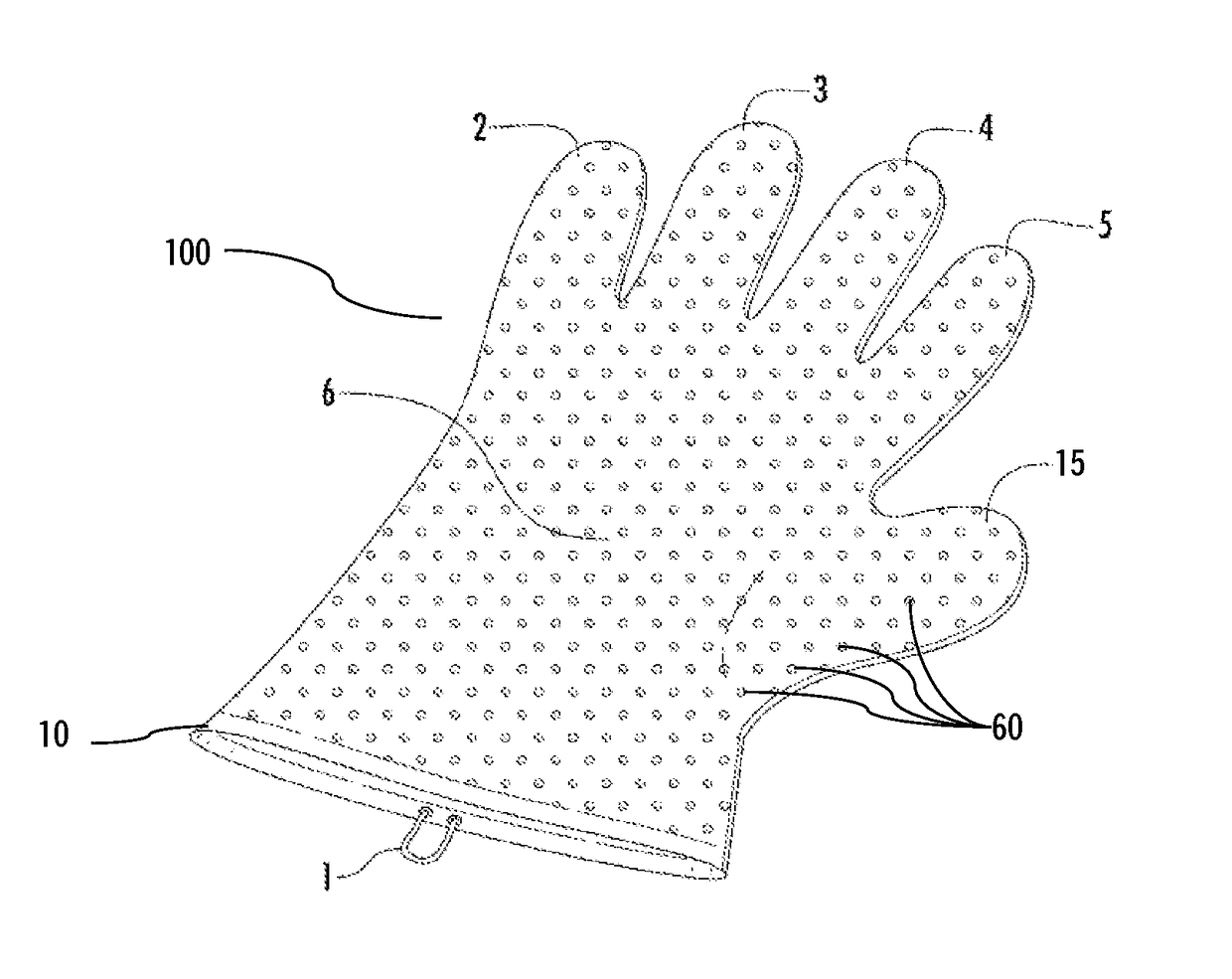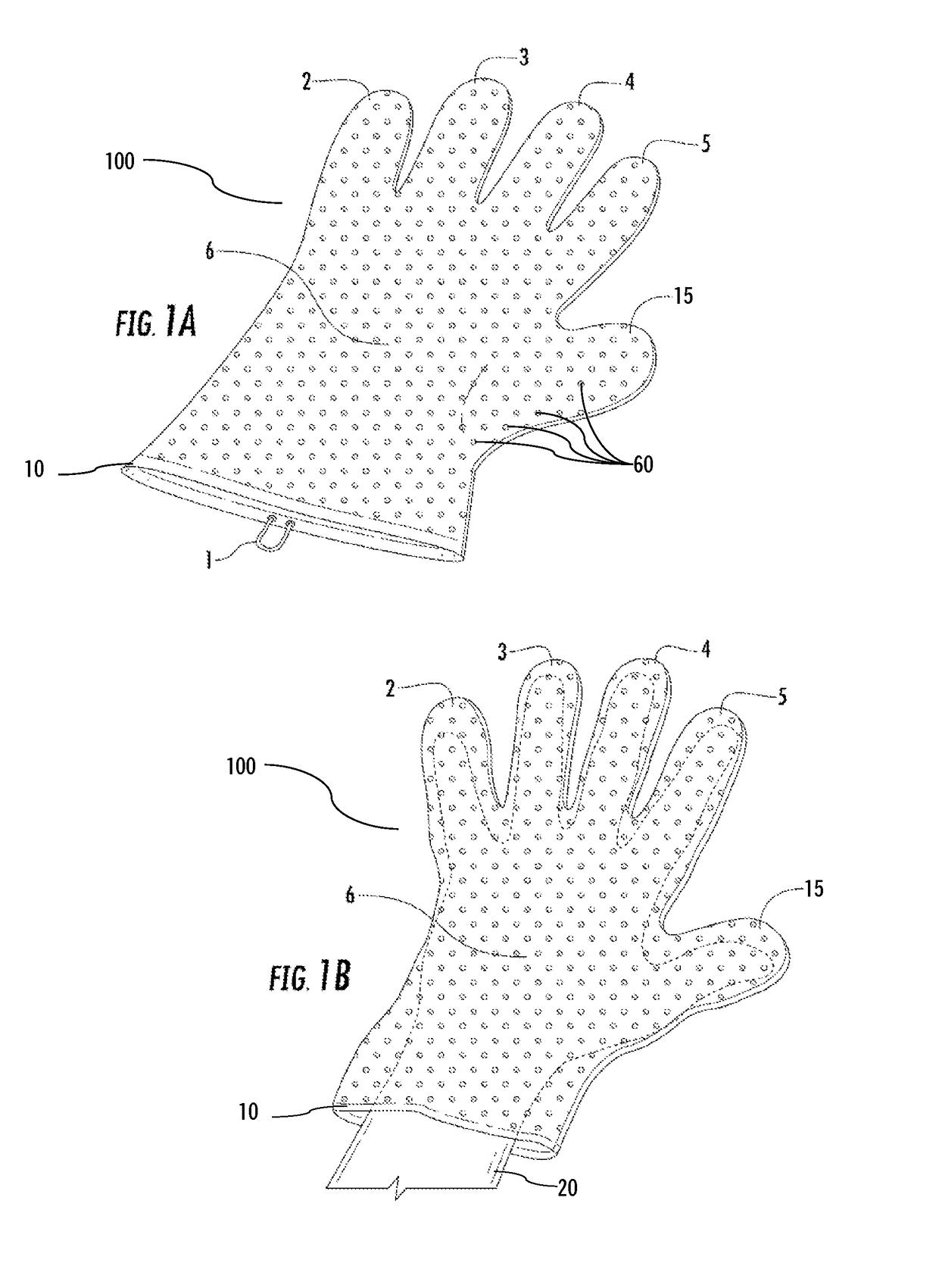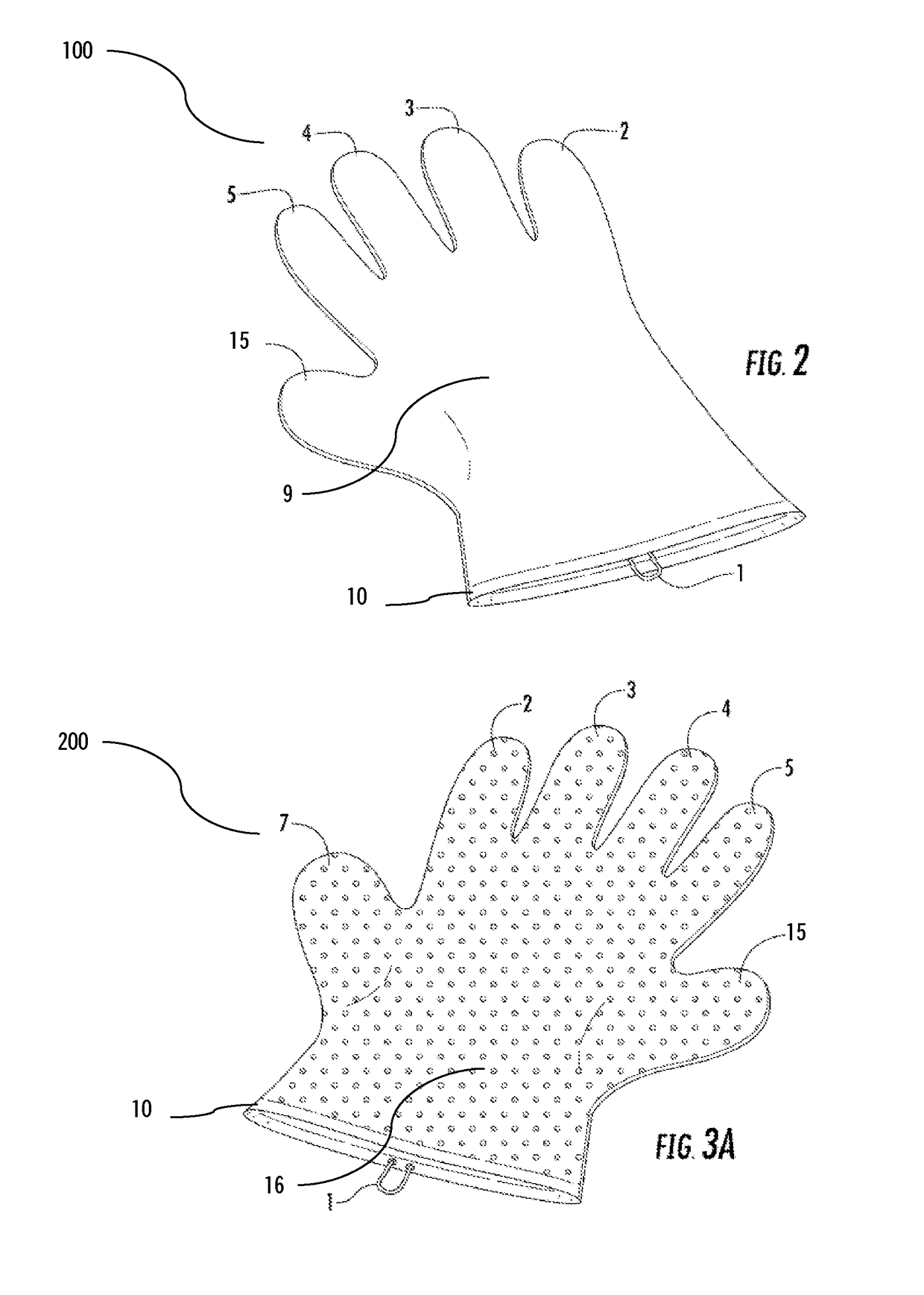Waste collection glove
a glove and waste technology, applied in the field of sanitary handlers, can solve the problems of surplus '670, not an inexpensive solution, and none of the current solutions in the prior art are ideal,
- Summary
- Abstract
- Description
- Claims
- Application Information
AI Technical Summary
Benefits of technology
Problems solved by technology
Method used
Image
Examples
Embodiment Construction
[0024]The following description represents the inventors' current preferred embodiments. The description is not meant to limit the invention, but rather to illustrate its general principles and utility. Examples are illustrated with the accompanying drawings. A variety of drawings are offered, showing multiple views and multiple embodiments of the present invention, both with a user's hand inserted, and without a user's hand inserted.
[0025]FIG. 1A shows the palm side 6 of a right-handed waste collection glove 100. FIG. 1B shows the palm side 6 of a right-handed waste collection glove 100, with a user's hand inserted 20. FIG. 2 shows the top side 9 of a right-handed waste collection glove 100. FIG. 5A shows the side of a right-handed waste collection glove 100. FIG. 5B shows the side of a right-handed waste collection glove 100, with a user's hand inserted 20. The right-handed waste collection glove 100 has a palm surface 6 and a top surface 9 joined at a seam 11. Both the top surfac...
PUM
| Property | Measurement | Unit |
|---|---|---|
| thick | aaaaa | aaaaa |
| thick | aaaaa | aaaaa |
| flexible | aaaaa | aaaaa |
Abstract
Description
Claims
Application Information
 Login to View More
Login to View More - R&D
- Intellectual Property
- Life Sciences
- Materials
- Tech Scout
- Unparalleled Data Quality
- Higher Quality Content
- 60% Fewer Hallucinations
Browse by: Latest US Patents, China's latest patents, Technical Efficacy Thesaurus, Application Domain, Technology Topic, Popular Technical Reports.
© 2025 PatSnap. All rights reserved.Legal|Privacy policy|Modern Slavery Act Transparency Statement|Sitemap|About US| Contact US: help@patsnap.com



